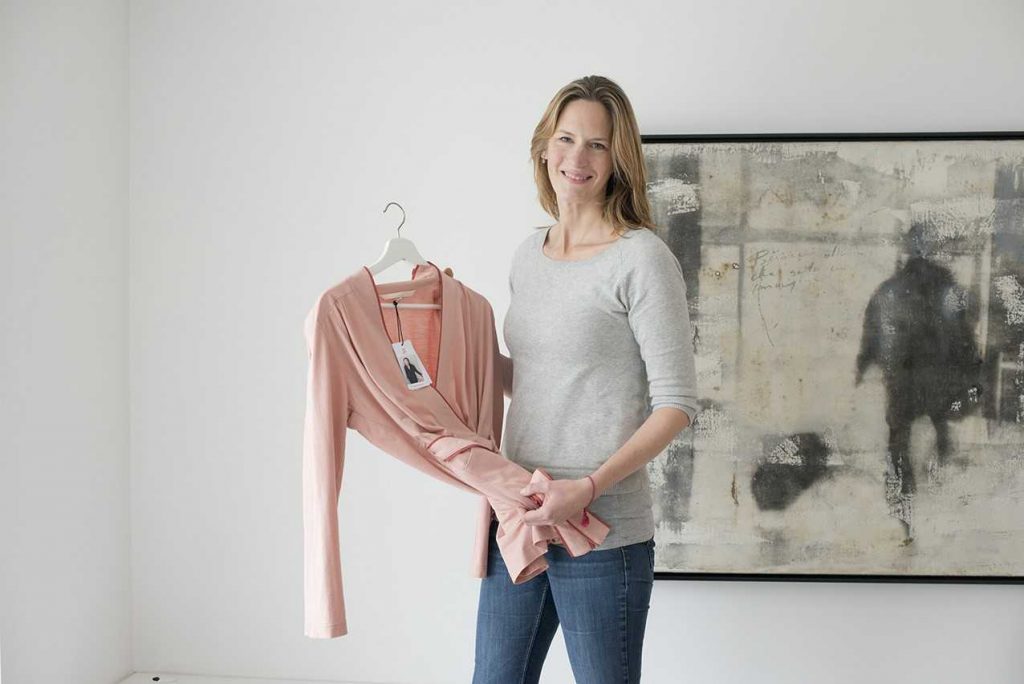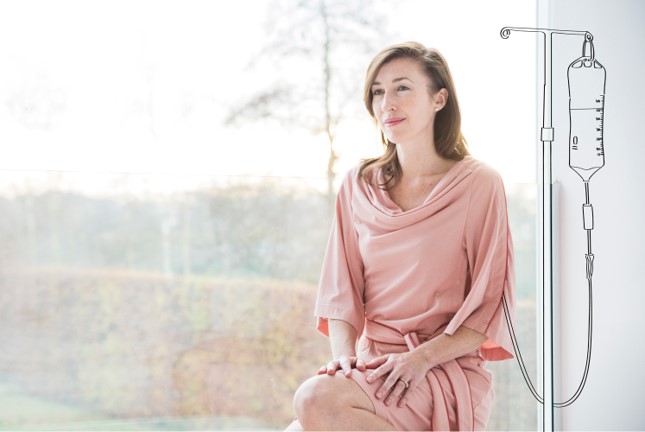Start up patient clothing company INGA Wellbeing has turned personal frustration about the de-humanising effect of the hospital gown and the difficulties of dressing in ‘home’ clothes when seriously or chronically unwell, to create elegant, comfortable and functional ‘normal-looking’ day- and nightwear for men and women undergoing medical treatment.
INGA Wellbeing co-founder Nikla Lancksweert tells the story behind the clothes that will revolutionise how you dress, see yourself and are seen by others: the clothes that ensure you are ‘more than a patient; a person’
——-
My mother – Irmingard, Inga to all who knew her – was 52 years old when she was diagnosed with ovarian cancer and underwent three gruelling years of medical treatment.
During this time, she often had to put on a hospital gown or sit in her underwear to be examined or treated by strangers. Wearing the barely bottom-covering unisex gown; dependent on busy nurses to get dressed and undressed; overwhelmed by unfamiliar surroundings; and, of course, feeling extremely unwell; it was sad and worrying to see my elegant, capable mother almost visibly shrink. Be diminished. Become less than herself.
I was incensed. Cancer was threatening to rob me of my mother but in the meantime, the hospital gown and realities of her medical treatment seemed to be doing a pretty good job of robbing her of everything that made her …well, her!
I could not cure her. I could not be with her at every moment. Or even at her side each time the consultant oncologist did his rounds. But surely there was a way I could help her survive the hospital experience?! I wanted to help her feel like herself; feel equal to her doctors and nurses; be confident enough to ask, or even demand, assistance when she needed it; to enjoy the company of visitors; to get some fresh air, or at least a change of scene by leaving her hospital room for a walk.
Hospital Gowns a Source of Patient De-Conditioning
Now, many years later, I know that the downward spiral my mother was experiencing is in fact a real medical phenomenon called de-conditioning and that nurses in the UK, the Netherlands, Ireland, Australia, New Zealand and Canada have identified the gown and wearing pyjamas as a significant cause. Research shows that patients that are inadequately dressed stay in bed more, lose muscle loss, bone density, their appetite and sense of balance and thus are more likely to fall and become depressed. This in turn means they stay in hospital longer, need more medical care when leaving and often … die sooner. Nurses now want to #endPJparalysis and help patients to get up out of bed, dressed and moving as it is believed that doing so supports a faster recovery.
Back then, I just wanted my mother to feel better, to look like my mother and to come home! While I was able to find her an attractive, non-stigmatising medical ID bracelet from Universal Medical ID to wear (to provide information on her cancer and allergy to penicillin), finding non-stigmatising and yet functional clothing was impossible at that time and the notion of INGA Wellbeing adapted patient clothing was conceived!
How and Why Stylish Patient Clothing Works
Many years and many talented people later, this idea has developed into a men’s and women’s collection of attractive, comfortable and functional tops, trousers and dresses, all of which look completely normal but are perfectly suited to the realities of life with IV lines, drains and monitors.
Made out of soft, natural fabrics, the award-winning clothes have discreet openings to the arm, back, chest area, sides, stomach, groin and legs. This enables many routine examinations and even treatments, such as chemotherapy or stoma emptying, to be carried out without the patient having to pull down their trousers or expose too much of …well, anything, really. The cuff-to-neck poppered sleeves enable most patients to dress and undress themselves easily even when hooked up to IV lines. And best of all, you would never guess that these were patient clothes. They look great! Really great!
I would have loved to have been able to have given my mother INGA Wellbeing clothes to wear as an in- and out-patient. They would have transformed her experience into something more bearable.
Today, as the UK’s National Health Service starts a 70-day nationwide campaign to get patients up, dressed and moving in order to combat de-conditioning, I can feel that the tide is turning in how patients are viewed and cared for… and how they view and care for themselves.
But while it is one thing to acknowledge at the very highest levels that patients feel better/less sick when they dress in day clothes, it is quite another to actually get them dressed given their many necessary medical interventions. That is where INGA Wellbeing’s collection of adapted patient clothing is a real game changer because it empowers most patients to dress and undress themselves AND to feel and look like ‘more than a patient; a person.’ Now … we just need everyone to spread the word!
About the author

Nikla Lancksweert, 42, mother of four girls enjoyed a career in her 20s as a journalist and then diplomat, worked in the foundation and charitable sector in her 30s and then decided that she wanted to improve the quality of patient care with a range of adapted clothing, inspired by her mother’s experiences during her cancer treatment. She lives in Belgium, with her husband, daughters, dog, cat and rabbit!





